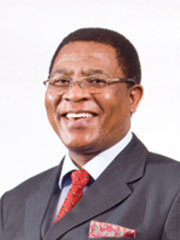The major challenge to deepening regional integration in Africa is not the lack of vision or appropriate policies; rather it is a lack of implementation of sector-wide policies. The continent is not only large but a very fragmented one. The internal boundaries between countries remain the same as those drawn by the European powers in the 1870s.


The major challenge to deepening regional integration in Africa is not the lack of vision or appropriate policies; rather it is a lack of implementation of sector-wide policies.
The continent is not only large but a very fragmented one. The internal boundaries between countries remain the same as those drawn by the European powers in the 1870s. It is probably fair to say that, as African States sought to create a national identity those internal boundaries between countries became more, rather than less, impenetrable.
These borders are thick and have not noticeably been reduced in thickness in the last few years. This is in spite of the policies and policy statements being made to create a single market in Africa. The World Bank measures what they term the "thickness” of borders based on average tariffs, capital openness, proportion of countries that need a visa to visit, and a press freedom index that includes information such as internet filtering.
At the continental level the debate is not whether we should have a continent-wide single market but how this is to be done. In the early days the debate was whether there should be a big-bang approach and the immediate creation of the United States of Africa, or a more gradualist approach. Our past leaders settled on a gradualist approach and so the Regional Economic Communities (RECs) i.e. Comesa, EAC, SADC etcetera were established. Their objective was to spearhead the process of creating the African Economic Community.
A raft of policies have been designed and decreed at the continental and regional levels in an attempt to bring African countries closer. At the overall trade level we have the Lagos, Plan of Action, and now a commitment to move to a Continental Free Trade Area. This is based on the Tripartite Free Trade Area which is supported by the "Building Inter-African Trade” initiative supported by the Africa Trade Policy Centre housed in United National Economic Commission for Africa (UNECA).
We have a number of other sector-wide policies such as the African Productive Capacity Initiative (APCI), which has now been replaced by the Accelerated Industrial Development of Africa (AIDA). We also have the Africa Mining Vision (AMV), the African (Accelerated) Agribusiness and Agro-industries Development Initiative (3ADI) and the Comprehensive Africa Agricultural Development Programme (CAADP). I could name a few more and list policies and programmes that have been launched in support of the continental policies.
The point is that at both the continental and regional levels in Africa, we have many good and forward-looking policies. So the problem is not a lack of policies or a lack of vision but in a lack of implementation.
The approach that both the Africa Union Commission (AUC) and its building blocks, the RECs have taken is to try to use moral suasion on their Member States to implement the policies agreed on at the annual Summit and Council meetings. At these meetings all sorts of promises and commitments are made. However, little is done in terms of implementation at the national level; that is until the next summit and series of Council meetings and the cycle repeats itself. The reasons for the lack of implementation are not always known. There is no mechanism to question the validity and appropriateness of a Summit decision.
To break this cycle the RECs must not only restructure but also develop an implementing strategy that is results-orientated, has an in-built monitoring and evaluation system based on Objectively Verifiable Indicators.
Working within the tripartite framework, the Common Market for Eastern and Southern Africa (COMESA) has just completed a restructuring exercise and a focus on an implementation strategy. Under such strategy, the Member States need to first understand the costs and benefits of Customs Union, the Tripartite Free Trade Area (FTA) agreement and even the Economic Partnership Agreements (EPA) to be able to implement them.
Once this has been ascertained they need to determine what policies, programmes, agencies, laws and structures are already in place to actually implement these trade agreements. Finally, there needs to be a programme in place that allows the Member States to make the transition from where they are now to where they need to be (in terms of structures, agencies and laws). In this way, they will successfully be a part of the trade agreements, or some of the trade agreements, mentioned above.
The writer is the Secretary General, Comesa


